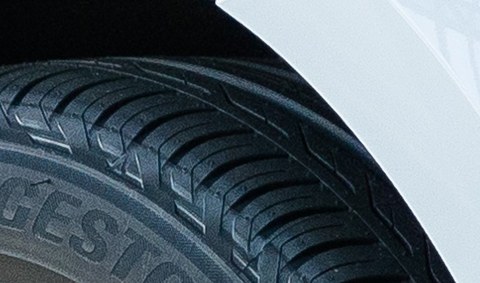Dec 17, 2018
Smart tyres – young scientists at TU Dresden develop tyre rubber for autonomous driving
Three international doctoral students at TU Dresden have developed tyre rubber that makes an important contribution to autonomous driving. These tyres can act as sensors, can grow back together after a puncture, and can adapt to the conditions of their surroundings.
Wet streets, strong rain, potholes: autonomous driving requires constant control and a continuous connection to the streets and their various conditions and uncertainties. Three early-career scientists at TU Dresden (TUD) took a closer look at the potential in tyres and have investigated their important role in mobility of the future. In their dissertations, they developed technologies and processes that will enable the production of so-called smart tyres.
- Tyres that function as sensors. Through the tyres, the driving status is recorded and transmitted to the car computer. In this way, information on the condition of the street, the weather and the forces and pressure that affect the tyres while driving can be analysed in real time and appropriate action can be taken. The tyres are therefore integrated into the digital network of the entire automobile.
Eshwaran Subramani Bhagavatheswaran (Eshwaran S. B.), an Indian doctoral student at TU Dresden, has developed a rubber that functions as a sensor. The result is a world first. He has equipped the rubber with tiny amounts of highly conductive carbon nanoparticles and thoroughly investigated the relationship between electrical and mechanical properties. As soon as the tyre rolls or brakes, information about the driving status and ambient conditions can be gathered from electrical signals. The on-board computer should then be able to adjust the driving mode. The dissertation on the topic will be defended at the beginning of February 2019.
The idea of integrating sensors into tyres is not new. Previous approaches, however, have incorporated the technology into the tyres as additional components made of non-rubber materials. This can lead to defects in the tyre, which can lead to damage.
- Tyre rubber shall grow together on its own in case of a flat tyre. A tyre always consists of rubber arranged in a net-like manner, so-called polymer networks. As early as 2015, scientists in Dresden attracted worldwide attention when they were able to prove that a chemically modified rubber mesh repeatedly reconnected after damage, thus closing existing cracks or holes. It is only now that the Syrian TU doctoral student, Aladdin Sallat, has succeeded in approaching the market maturity of self-healing rubber.
Tyres have certain fillers between the rubber mesh (e.g. silica) which reinforce the tyre. The latest research conducted by Aladdin Sallat has now proven the self-healing effects for certain rubber meshes with modified fillers and has thus made an enormous stride towards the actual application. As a result, the tyre rubbers would suffer significantly less wear in the future and contribute to the reduction of CO2 emissions and abrasion particles. In spring 2019, Sallat will defend his dissertation in which he demonstrated the self-healing effects of rubber with fillers.
- Tyres that adapt to surrounding conditions. Scientists were inspired by the sea cucumber, which is soft at first but stiff when touched. Adaptive tyres can become harder in wet conditions thanks to specially modified fillers and thus protect against aquaplaning, for example. With heat, the tyres become soft again.
This is made possible by certain polymers and the filler calcium sulphate, which has been modified to absorb water and then change its structure to a nanocrystalline form ten times stiffer.
The Indian TU doctoral student Tamil Selvan Natarajan (Tamil S. N.) will defend his dissertation in mid-January 2019. His globally patented development is suitable for various applications in tyres and windshield wipers.
The three young researchers at TU Dresden are completing their doctorates at the Faculty of Mechanical Science and Engineering (Eshwaran S. B. and Tamil S. N.) and at the Faculty of Chemistry and Food Chemistry (Aladdin Sallat). They conducted the experimental work for their doctorates at the Leibniz Institute of Polymer Research Dresden (IPF) under the supervision of Prof. Gert Heinrich (Eshwaran S. B. and Tamil S. N.) and Prof. Brigitte Voit (Aladdin Sallat). All three have recently published their research results in renowned journals.
"The tyre is the most underrated high-performance product in our society because changes are not visible. Around five to seven thousand people worldwide are currently investigating tyres and trying to make them fit for the future. Smart tyres can prevent accidents and make a decisive contribution to autonomous driving. Our goal is to generate research results that can be produced using conventional mixing and processing methods, so that intelligent tyre rubbers can be produced not only in the laboratory but also using existing industrial technologies," explains Prof. Gert Heinrich, Senior Professor of Polymer Materials at TUD and IPF. The research is an example of TU Dresden's close cooperation with non-university research institutions as part of the DRESDEN-concept science network.
Media Inquiries
Prof. Dr. Gert Heinrich
Senior Professor TU Dresden
Faculty of Mechanical Science and Engineering / Institute of Textile Machinery and High Performance Material Technology
Leibniz Institute of Polymer Research Dresden
Tel.: (+49) 0179 9418316

